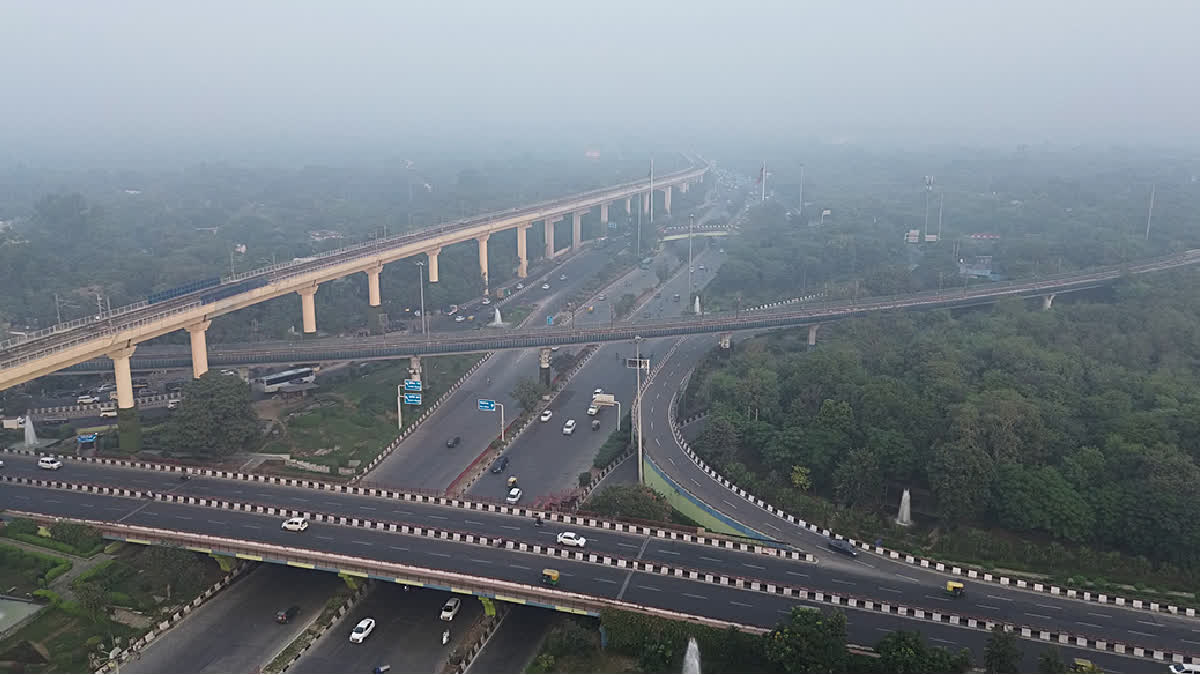New Delhi: Delhi’s air quality worsened significantly on Wednesday evening, with the Air Quality Index (AQI) breaching the 450-mark, placing it in the 'Severe Plus' category. This marked an increase from Tuesday’s AQI of 442, highlighting the escalating pollution levels in the national capital.
According to the Central Pollution Control Board’s (CPCB) Sameer app, Nehru Nagar (485) and Wazirpur (482) were the worst-affected areas, followed closely by Rohini (478), Anand Vihar (478), and Punjabi Bagh (475). A shallow layer of fog blanketed the city throughout the day, trapping pollutants and intensifying discomfort across Delhi.
Mahesh Palawat, vice president of Skymet, told ETV Bharat, “During the first half of December, winds were moderate from the northwest direction, with speeds varying between 15-20 kmph. These moderate winds helped disperse pollutants, keeping the AQI in the moderate category. However, a fresh Western Disturbance has approached the Western Himalayas, inducing a cyclonic circulation over central Pakistan and adjoining parts of Punjab. As a result, wind speeds have slowed, and the direction has shifted from west to east.”
He added, “Low wind speeds, low temperatures, and increased humidity levels have contributed to the formation of fog. Pollutants like smoke particles, dust, and harmful gases are now trapped with the fog, creating smog.” The maximum temperature in Delhi on Wednesday was recorded at 23 degrees Celsius, slightly above the seasonal average, while the minimum temperature dropped to 7.6 degrees Celsius, a notch below normal. Despite the relatively mild daytime temperature, the evening air felt colder due to the thick pollution haze.
The national capital remains under Stage-IV of the Graded Response Action Plan (GRAP), the strictest anti-pollution measures, which include a ban on construction activities and the entry of non-essential polluting trucks. Schools across Delhi-NCR have shifted to a hybrid mode of learning for students in grades 6-9 and 11. Meanwhile, students of classes 10 and 12 are required to attend in-person classes.
Experts have urged immediate action as AQI levels of 400 or above pose serious health risks, particularly for vulnerable populations. The rising pollution levels underscore the urgent need for stronger interventions and long-term measures to address Delhi’s air quality crisis.



